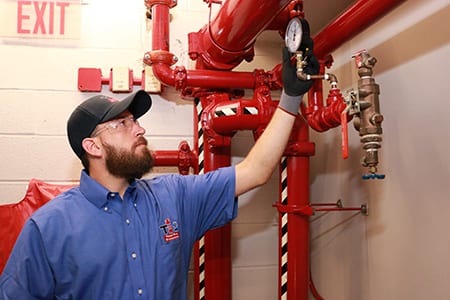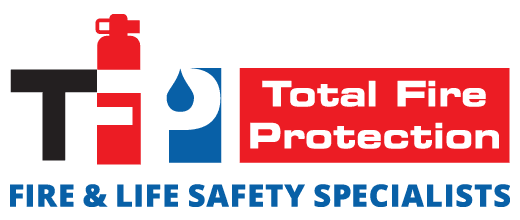 Your fire sprinkler or suppression system is your strongest defense against a growing fire in your building. However, one of the leading causes of a malfunctioning or ineffective sprinkler or suppression system is irregular or improper inspections. Therefore, inspections are essential for keeping your building and its occupants safe.
Your fire sprinkler or suppression system is your strongest defense against a growing fire in your building. However, one of the leading causes of a malfunctioning or ineffective sprinkler or suppression system is irregular or improper inspections. Therefore, inspections are essential for keeping your building and its occupants safe.
To ensure your sprinklers will work when you need them, they must be inspected on a scheduled basis and whenever they show signs of wear. Below, we’ll discuss the required schedule for having your sprinkler or suppression system inspected and the signs that your system may need to be inspected outside that schedule.
Required Fire Sprinkler & Suppression System Inspection Schedule
Sprinkler systems are made up of many intricate parts, including switches, gauges, pipes, and more. Each part requires its own inspection schedule to ensure it is working properly if a fire starts.
Below are the recommended inspection schedules for each component of your sprinkler system:
Weekly
Your sprinkler system’s gauges are vital for knowing how much pressure is flowing through the system. They must be inspected in dry, pre-action, and deluge systems as much as once per week to ensure they are working properly.
Monthly
However, your sprinkler system’s wet pipe gauges can go a month between inspections.
Quarterly
Every three months, you must have detailed inspections performed on your valve alarm devices, control valves, signal devices, water flow alarm devices, hydraulic nameplates, and fire department connections.
Annually
Once a year, your pipework, fittings, hangar, and seismic bracing, signage, and the sprinklers themselves will need to be inspected.
Every Five Years
You must have all of your sprinkler system’s internal pipework inspected every five years to ensure there are no blockages and remove them when necessary.
Not sure when these parts were last inspected? Call TFP today to ensure you’re in compliance.
5 Signs Your Sprinkler System Needs to be Inspected
In addition to the regular, scheduled inspections listed above, there are exceptional cases where your system may require service. If you see or experience any of the below indicators, make sure you have your fire sprinkler system inspected right away.
1) Head & Pipe Damage – there are various ways your system can become physically damaged, so any visual damage to your head pipe or other piping can lead to malfunction and improper water flow in the case of a fire.
2) Rust – any metal piping in your system can become corroded or rusted, which can lead to leaking or improper function in the case of a fire. If you see corrosion or rust or smell rotten eggs, it’s time for an inspection.
3) Leaks – leaking from any of your system’s parts should be a major concern and cause for immediate inspection. Leaks can lead to property and equipment damage and prevent your system from triggering correctly in the case of a fire.
4) Infrastructure Changes – lastly, if there have been any physical changes to your building, your system may have gotten damaged during construction or may need to be updated to service your altered layout.
5) System Age – visual damage or leaking are good indicators of needing an inspection, but you should also get one done if your system is old. You may not be able to see issues with your equipment, but older materials can have internal defects or obsolete parts that aren’t suitable for proper fire prevention.
Whether your system is due for a scheduled inspection or it is showing signs of wear and tear, contact one of our fire safety professionals to inspect your fire sprinkler system. They’ll complete a proper inspection to help you prevent property and equipment damage and protect your employees’ and guests’ safety and well-being.




